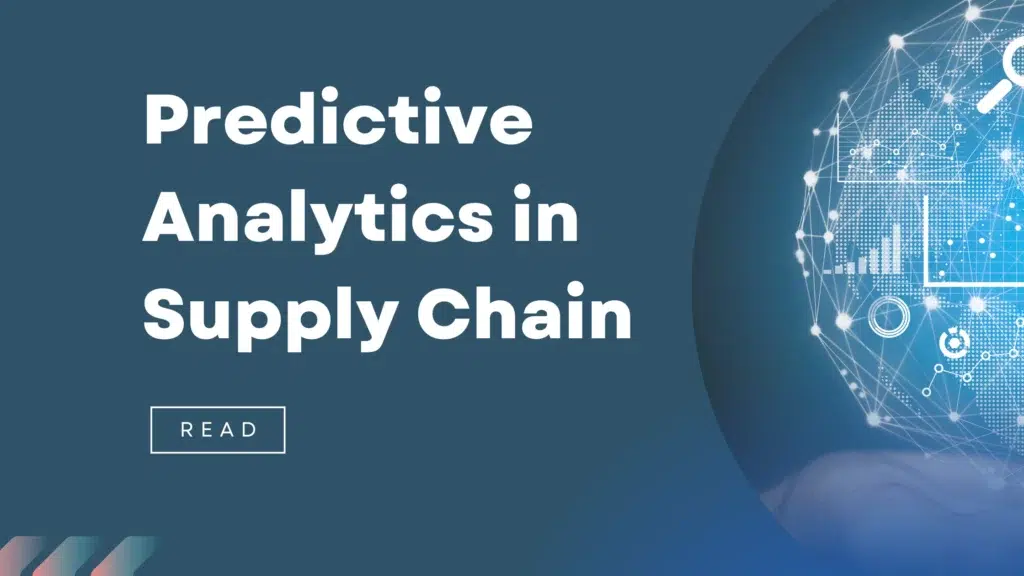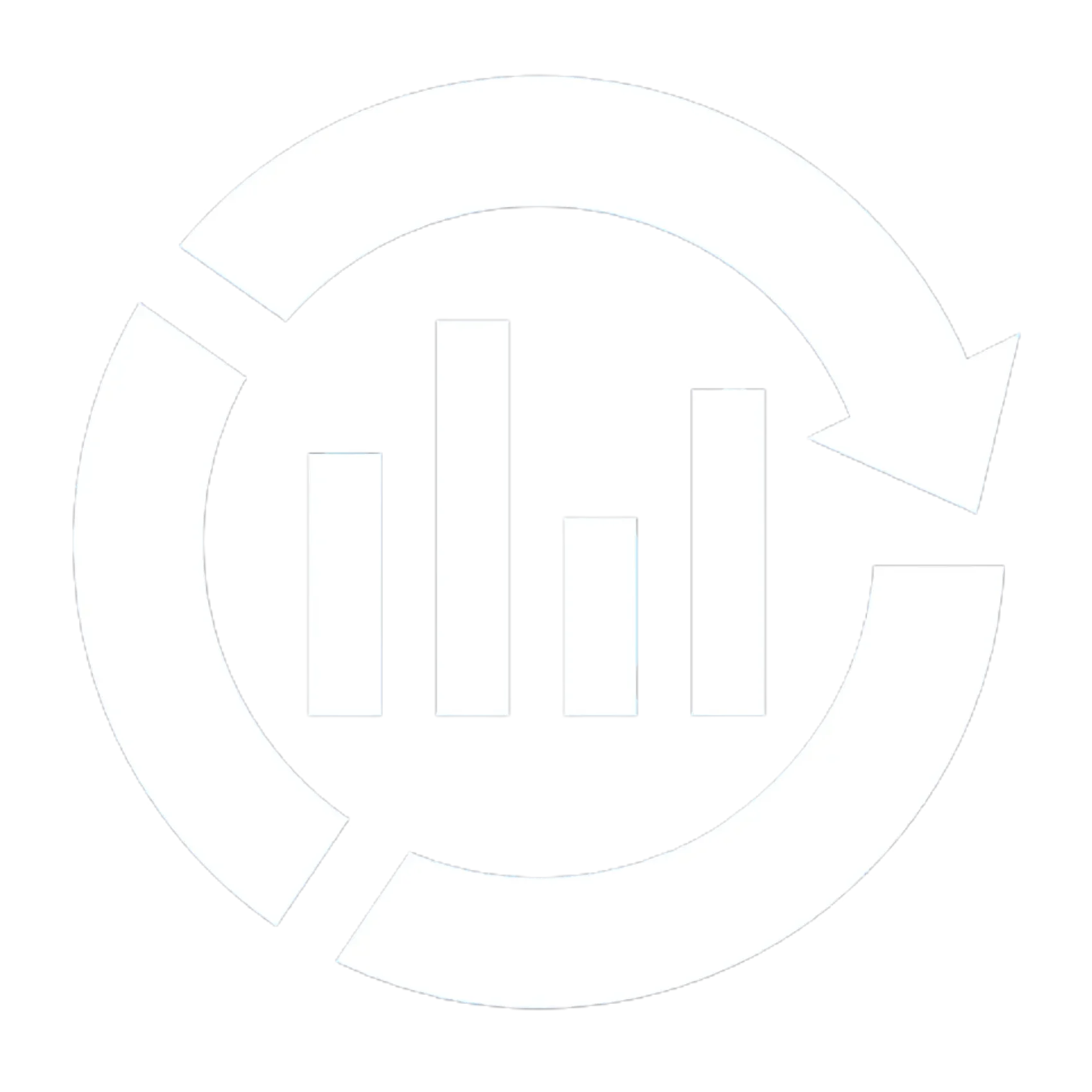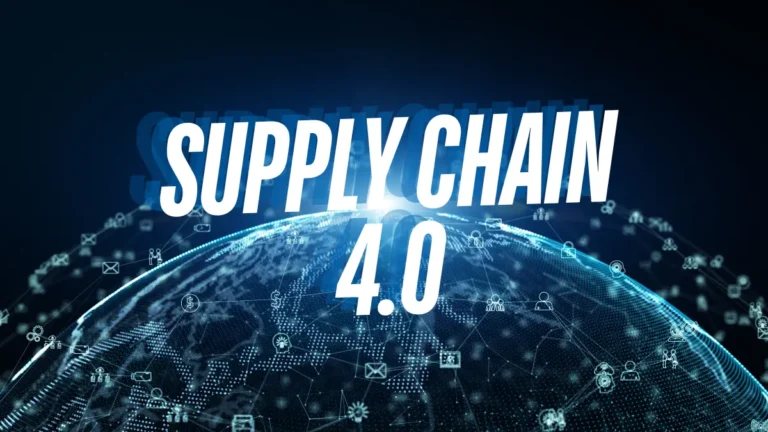Missed forecasts and stockouts cost global supply chains billions every year — but predictive analytics in supply chain is changing that. From grocery retailers running out of seasonal products to manufacturers facing costly overproduction, inaccurate predictions have long been one of the biggest supply chain challenges.

In this guide, you’ll gain a clear understanding of predictive analytics in supply chain management — what it is, how it works, and the real-world benefits it delivers. We’ll explore practical use cases, tools, and proven strategies so you can move from reactive firefighting to proactive planning.
If you’re new to the broader concept of supply chain analytics, you may want to start with our detailed guide on What is Supply Chain Analytics? Why is it Important? before diving into predictive techniques. Predictive analytics is one part of the larger supply chain analytics framework, which also includes descriptive, prescriptive, and cognitive analytics — all working together to improve decision-making and resilience.
What is Predictive Analytics in Supply Chain?
Predictive analytics in supply chain management is the use of historical and real-time data, combined with statistical modeling, machine learning, and AI algorithms, to forecast future trends and potential risks. The goal is to anticipate events before they occur — enabling companies to act proactively rather than reactively.
By applying predictive models, supply chain leaders can answer critical questions such as:
- What will demand look like next quarter?
- Which suppliers are most at risk of delay?
- How can we reduce inventory without increasing stockouts?
This data-driven approach supports better decision-making across procurement, production, inventory management, and distribution.
Predictive analytics is a subset of the broader supply chain analytics discipline, which also includes descriptive analytics (understanding past performance) and prescriptive analytics (recommending actions). While descriptive analytics tells you what happened, and prescriptive analytics tells you what to do, predictive analytics gives you a window into what’s likely to happen next — and the opportunity to prepare.
Key Components of Predictive Analytics in Supply Chain:
- Forecasting future demand using past sales data and market indicators.
- Identifying potential disruptions by analyzing supplier performance and geopolitical risks.
- Optimizing inventory levels to balance holding costs with service levels.
How Predictive Analytics in Supply Chain Works?
Predictive analytics in supply chains relies on a combination of historical patterns, real-time insights, and advanced algorithms to forecast future outcomes with greater accuracy. It’s not just about having data — it’s about turning that data into actionable intelligence.

Historical Data
The foundation of any predictive model is clean, comprehensive historical data. This can include:
- Sales history across seasons, promotions, and market cycles.
- Inventory turnover rates and product lifecycle trends.
- Supplier lead times and past on-time delivery performance.
Analyzing this data reveals recurring patterns and anomalies, which form the baseline for future predictions.
Real-Time Visibility Data (IoT, Sensors, POS Systems)
While historical data shows where you’ve been, real-time data shows where you are now — a critical component for adapting to sudden market shifts. Examples include:
- IoT-enabled asset tracking to monitor goods in transit.
- Warehouse sensors providing live inventory counts.
- Point-of-sale (POS) systems feeding up-to-the-minute demand signals.
When integrated with historical data, real-time inputs help adjust forecasts dynamically, reducing the risk of overstocking or stockouts.
AI/ML Models (Time Series, Regression, Anomaly Detection)
Modern predictive analytics goes beyond spreadsheets. AI and machine learning algorithms can:
- Model seasonal demand using time series analysis.
- Correlate demand drivers with external factors like weather, GDP growth, or marketing spend using regression models.
- Flag unusual activity — such as sudden supplier delays or unexpected demand surges — with anomaly detection.
These models continuously learn and improve as more data is fed into them, leading to more accurate and reliable predictions over time.
For a deeper dive into the analytical foundations, you can explore our blogs on supply chain data analytics to understand how raw data is transformed into decision-ready insights.
Benefits of Predictive Analytics in Supply Chain
When implemented effectively, predictive analytics transforms supply chains from reactive to proactive. The impact isn’t just about saving money — it’s about building operational resilience, improving customer satisfaction, and creating a sustainable competitive advantage.
Improved Forecast Accuracy
By combining historical trends with real-time demand signals, predictive models deliver far more precise forecasts than traditional methods. This means smarter purchase orders, fewer last-minute changes, and a better match between supply and demand.
Inventory Optimization & Reduced Holding Costs
Accurate demand predictions help businesses maintain optimal stock levels — avoiding both overstock (which ties up capital and increases storage costs) and understock (which leads to missed sales). For more insights, explore our guide on inventory optimization techniques.
Supplier Risk Management
Predictive analytics can highlight early warning signs of supplier performance issues, such as slower lead times or increasing defect rates. This allows companies to proactively find alternative sources before disruptions occur.
Optimized Logistics
By factoring in traffic patterns, weather forecasts, and order priorities, predictive analytics helps logistics teams plan efficient routes, reduce fuel consumption, and improve on-time delivery rates.
Better Collaboration & Visibility
When data is shared across departments and with suppliers, everyone works from the same forecast. This improved transparency fosters better coordination and trust throughout the supply chain ecosystem.
Competitive Advantage
Organizations that master predictive analytics can adapt faster to market changes, capture opportunities earlier, and consistently deliver on customer expectations — creating a clear edge over competitors still relying on outdated forecasting methods.
Key Use Cases of Predictive Analytics in Supply Chains
Predictive analytics is not just a buzzword — it’s being applied across industries to solve real, high-stakes challenges. Below are the most impactful use cases where data-driven forecasting can make an immediate difference.
Retail Demand Forecasting
Retailers use predictive models to forecast demand by store, region, and season. This allows them to prepare inventory for seasonal peaks or promotional campaigns without overstocking.
For a deeper understanding of demand trends, check out our post on demand forecasting in supply chain management.
Manufacturing Production Planning
Manufacturers leverage predictive analytics to schedule production runs, optimize raw material procurement, and prevent bottlenecks on the shop floor. This minimizes downtime while ensuring just-in-time production.
Logistics Route Optimization
Using weather patterns, traffic data, and order priority, predictive analytics can suggest the fastest, most cost-effective delivery routes — reducing delays and fuel costs.
Supplier Risk Scoring
By monitoring supplier performance metrics such as on-time delivery rates, defect rates, and geopolitical risks, companies can create a supplier “health score” and proactively mitigate risks before they cause disruptions.
Cold Chain Demand Prediction (Perishable Goods)
For perishable goods like pharmaceuticals and fresh produce, predictive analytics helps ensure the right quantity is shipped to the right location before expiry. This reduces waste and keeps compliance with quality standards intact.
Tools & Technology Stack for Predictive Analytics in Supply Chains
The right technology stack is critical to making predictive analytics accurate, scalable, and actionable. In 2025, companies are combining AI, real-time visibility, and ERP integrations to achieve faster, smarter decision-making.
AI Forecasting Platforms
Advanced AI platforms like Kinaxis, o9 Solutions, and SAP IBP use machine learning algorithms to process historical sales data, market signals, and real-time demand triggers. These tools help companies make precise forecasts for seasonal spikes, product launches, and promotional campaigns.
Real-Time Visibility Tools
IoT-enabled platforms such as FourKites and project44 provide live tracking of shipments, inventory levels, and production status. This real-time data feeds predictive models for early risk detection and dynamic decision-making.
ERP System Integration
Integrating predictive analytics with ERP systems (e.g., SAP, Oracle NetSuite, Microsoft Dynamics) ensures seamless data flow between procurement, inventory, and logistics teams. This reduces manual effort and aligns analytics outputs directly with operational execution.
Data Visualization & BI Tools
Tools like Tableau, Power BI, and Qlik Sense turn predictive insights into visual dashboards that are easy for stakeholders to understand and act upon. If you’re looking to boost decision-making through visualization,
Cloud Data Platforms
Solutions like AWS, Azure, and Google Cloud provide the computing power and storage to handle massive, multi-source supply chain datasets. These platforms are essential for training large-scale AI/ML models.
Challenges & How to Overcome Them in Predictive Analytics for Supply Chains
While predictive analytics offers huge potential, successful implementation requires overcoming a few key hurdles. Understanding these challenges upfront will help ensure smoother adoption and long-term results.
1. Data Quality and Consistency
Predictive models are only as good as the data they’re built on. Inconsistent, incomplete, or outdated data can lead to inaccurate forecasts and misguided decisions.
Solution: Implement robust supply chain data management practices including standardized data formats, automated cleansing processes, and continuous quality monitoring.
2. Resistance to Change
Employees and stakeholders may be hesitant to adopt new technology or rely on AI-driven insights instead of traditional methods.
Solution: Roll out change management programs with clear communication on the benefits, plus training sessions to build confidence. Pilot projects with quick wins can help secure buy-in.
3. Skills Gaps in Analytics & AI
Many supply chain teams lack in-house expertise in AI, machine learning, or data science, which limits their ability to build and maintain predictive models.
Solution: Upskill your workforce with targeted training in analytics or collaborate with external partners. Our guide on supply chain analytics skills offers a clear roadmap.
4. Integration Complexity
Predictive analytics tools often need to integrate with multiple existing systems — ERP, WMS, TMS — which can be technically challenging.
Solution: Use middleware solutions and APIs for seamless connectivity. Choose platforms with proven compatibility with your current tech stack.
5. Overreliance on the Model
While models are powerful, they can’t capture every nuance, especially during black swan events like pandemics or geopolitical disruptions.
Solution: Combine predictive analytics with scenario planning and risk management strategies to build resilience.
Future Trends in Predictive Analytics for Supply Chains (2025 & Beyond)
The pace of innovation in supply chain technology means predictive analytics is evolving rapidly. By 2025 and beyond, we can expect these game-changing trends to shape how companies forecast, plan, and respond.
1. Digital Twins for End-to-End Simulation
Digital twins create virtual replicas of supply chains, allowing companies to run “what-if” scenarios without disrupting real-world operations. For example, you can simulate the impact of a supplier delay or demand spike before it happens.
2. Generative AI for Scenario Forecasting
Generative AI can create multiple demand and supply scenarios instantly, helping teams identify optimal strategies under different conditions. By combining it with historical and real-time data, businesses can get faster, more adaptive insights.
3. Autonomous Demand Sensing
Next-gen predictive analytics platforms are integrating IoT, point-of-sale data, and external market signals to detect demand shifts automatically — sometimes days or weeks before they appear in traditional forecasts.
4. Predictive Sustainability Analytics
As ESG goals become a board-level priority, predictive analytics will expand to include carbon impact forecasting, enabling greener supply chain decisions.
5. AI-Powered Supplier Risk Monitoring
By 2025, predictive analytics will monitor supplier performance in real time, scoring them for potential delays, financial instability, or compliance issues.
Conclusion & Action Steps
Predictive analytics is no longer a “nice-to-have” — it’s a competitive necessity in modern supply chain management. By leveraging historical data, real-time visibility, and AI-driven forecasting models, companies can cut costs, reduce stockouts, and build resilience against disruptions.
If you’re just starting your analytics journey, begin by identifying high-impact use cases such as demand forecasting, inventory optimization, or supplier risk scoring. From there, run a pilot project to validate ROI before scaling.
Remember: the key to success is data quality, cross-functional buy-in, and the right technology stack.
The sooner you integrate predictive analytics into your operations, the sooner you’ll shift from reacting to market changes to shaping them.




4 Comments